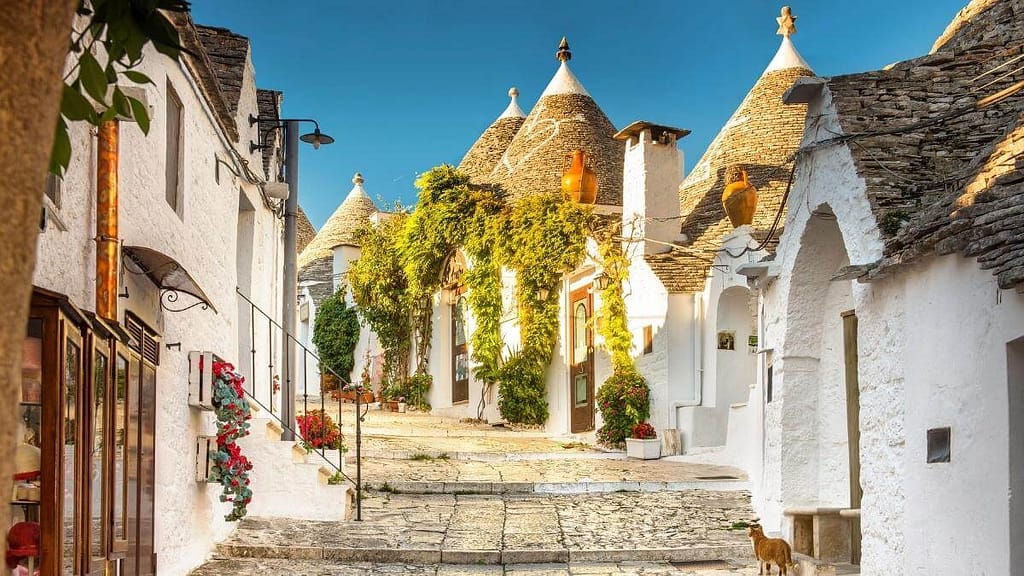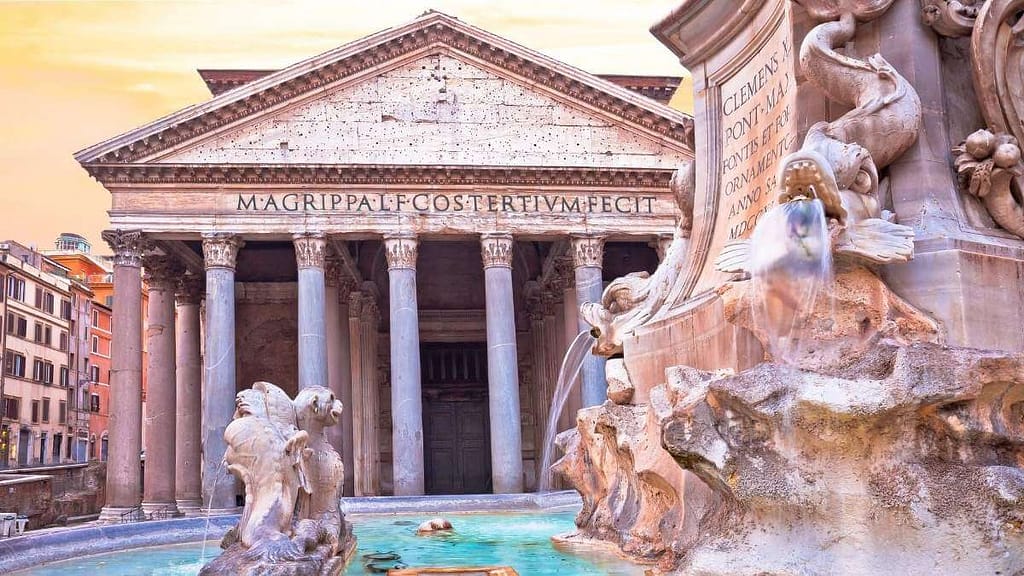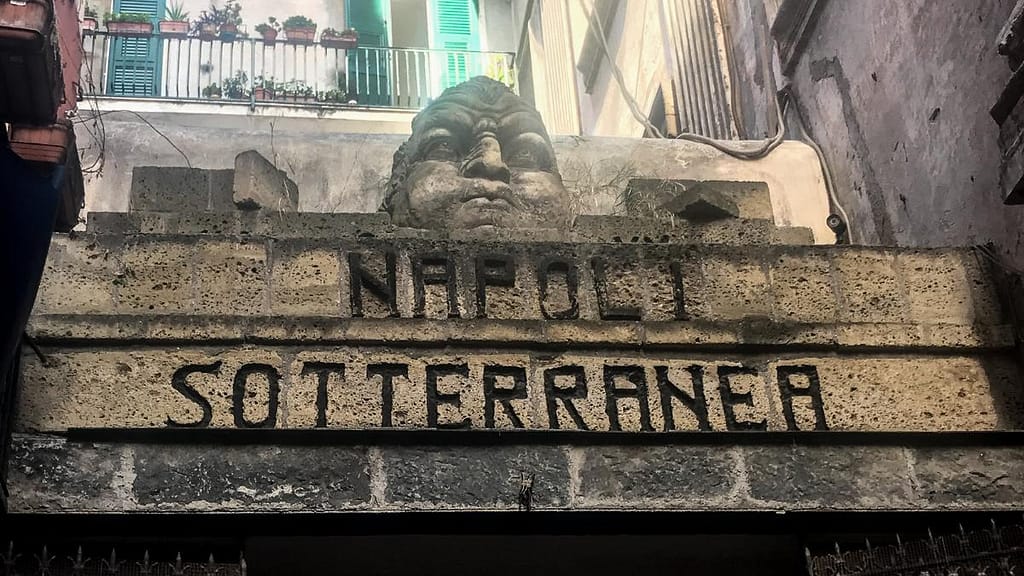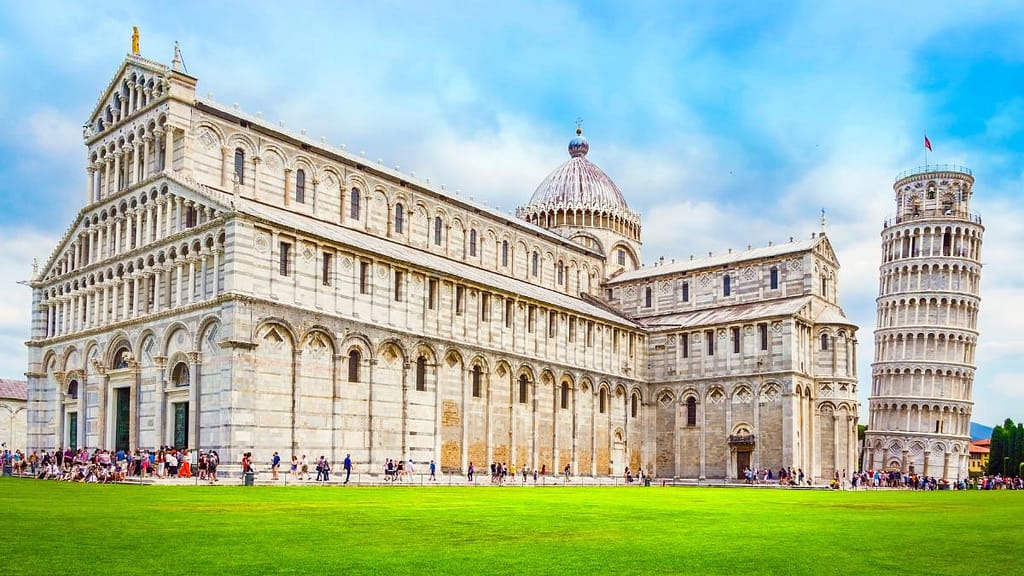While Italy doesn’t lack an abundance of charming small towns, there is something magical about Alberobello in the southern region of Puglia. Alberobello is a UNESCO World Heritage Site and one of the most beautiful villages in Europe, famous for its white-washed trulli dwellings.
When we decided to explore Puglia, everyone said that the town was a must-visit destination, so we decided to explore, and we weren’t disappointed. Alberobello has been inhabited for over 2,000 years and today is a popular tourist destination. There is a lot of history here combined with unique architecture not found anywhere else. For us, it was a winner, and we think you should add it to your next Italian itinerary.
Here is what you need to know about visiting this magical town.
This post may contain compensated links. Find out more info in our DISCLAIMER.
Why is Alberobello Italy so popular?
Alberobello is famous thanks to the high concentration of unique trulli homes, found only in this part of the country. These houses are made from dry stone, without using any mortar or cement, and are characterized by conical-shaped roofs made with clay tiles. Alberobello’s trulli houses were given UNESCO World Heritage status in 1996.
The trulli (trullo singular) are single-storey small buildings with just one large space. In the past, large families lived in trulli groups, constructed next to each other. Due to their construction, it was more practical to build several smaller ones rather than one big one.
You’ll find many trulli structures scattered in the area as they were often used for storehouses and field shelters. In Alberobello, the locals used them as main lodgings, and some of them are still used as homes today.
History of the trulli dwellings
The trulli structures we know today date back to the 14th century when the area came under the control of Count Acquaviva of Conversano. He moved his subjects here, but there was a slight problem with that plan. In those days, permanent dwellings meant paying taxes to the king. To avoid that, the count instructed his people to build temporary housing.

The workers constructed the trulli based on ancient building techniques using limestone that was abundant in the area. The dwellings could be easily dismantled in a hurry and rebuilt as needed. This process went on for about 300 years when Alberobello officially became a town in 1797. It seems that not paying taxes was way more important to all those counts than displacing their people. What a way to live.
Is Alberobello worth visiting?
Yes, we do think that Alberobello is worth visiting. The historic centre is one of the most beautiful places in Alberobello. It was built on top of a hill with an altitude of about 100 meters. This area is where you can find most of the buildings from this medieval village, including shops, churches and residences from all periods.
While this part of Italy isn’t on everyone’s radar, the town is touristy. There is no way of getting around that. Here you’ll find numerous gift shops geared toward wandering visitors lining up the pretty streets. Many of the dwellings have become shops, restaurants and lodgings. Due to their size and how they were built, it’s limiting what you can do with them.

We’ve read several posts of people complaining of being underwhelmed or disappointed during their visit. Most people who come here stroll along the trulli-lined streets and take some pictures. This means that all the tourists that come here will be doing the same thing as you, especially if you visit during the high season. It’s not different from other popular destinations like Rome, Florence or the Amalfi Coast.
Alberobello is a unique town with architecture not found anywhere else. While it is picturesque, it also has a fascinating history and is a testament to human tenacity and adaptability. Look past the shops and the tourists, and you’ll discover hidden gems that will delight you. It’s an excellent destination for cultural tourists and architecture lovers and the reason we enjoyed it so much.
How to get to Alberobello
Puglia is filled with olive groves and breathtaking landscapes worth discovering. You can make Alberobello your base for exploring the surrounding area or simply stop by for a visit. Outside the historic centre is a modern town that you can include in your itinerary when you visit Alberobello.
The historic district is a pedestrian-only area so prepare for lots of walking. We drove to Alberobello and found parking just outside the centre. There are numerous parking lots within the walking area to accommodate visitors. You can also take a train from Bari, Brindisi or Lecce using the Ferrovie Sud Est (FSE).


You’ll find a variety of lodgings around Alberobello, including guesthouses and Airbnbs. If you opt to say in the historic centre, be prepared to drag your suitcase across uneven ground and remember that there are no elevators, so pack light.
Tips for visiting Alberobello trulli district
The district of Rione Monti sits on a slope facing the modern town centre. Here you’ll find over 1,000 trulli lining up along the narrow lanes winding along the hillside. We recommend strolling around the picturesque streets and admiring the views. Some trulli have been converted into shops, galleries and restaurants. Several offer access to rooftop terraces, although if they are not part of a restaurant, you might be expected to pay a fee to access them.

This area is fully geared towards visitors, with many shops selling local specialties like terracotta whistles, handwoven linens and ceramics. You’ll also find shops selling dried pasta and taralli, a Pugliese invention similar to a pretzel or a cracker. The taralli can be sweet or savoury, flavoured with everything from onion, garlic, fennel and chilli, to name a few. The prices aren’t exorbitant as the competition is fierce, which is handy if you want to make some purchases.
Largo Martellotta, the main street that cuts through the historic centre, is lined with bars, restaurants and food shops. It’s broad and flat, which is a nice break from the hilly streets where the trulli are. There is a fruit and vegetable market on Thursdays where you can buy local food and produce for very affordable prices.

On the other side of Largo Martellotta is the quieter district of Rione Aia Piccola. A residential area with a more authentic and less commercialized feel. Although smaller than the Rione Monti, there are about 400 trulli dwellings with winding streets and great views.
Final thoughts about Puglia’s Alberobello
We visited Alberobello in late September. While we encountered more tourists there than we had in other parts of Puglia, the numbers still weren’t overwhelming. Many of the main paths were busy, but we also found many empty lanes where we were alone to admire the scenery around us.
Alberobello is beautiful, like a magical town straight out of a fairy tale. The town reminded us of Greek islands, which is unsurprising since Greeks settled here long before the Romans. The ancient building techniques used to create the trulli date back to their times. You can walk around or sit down and bathe in the beauty around you. It’s even more magical in the evening when the string lights come on and illuminate the streets with a warm glow.


As the day turned into night, we found ourselves charmed by this enchanting little town where time seemed to slow down. After walking around and the obligatory pictures, we opted to enjoy some Aperol spritzes as we people watched. It was fun, relaxing and enjoyable.
Have you been to Alberobello? Let us know what you think.






